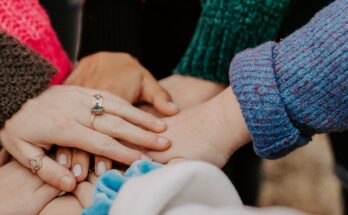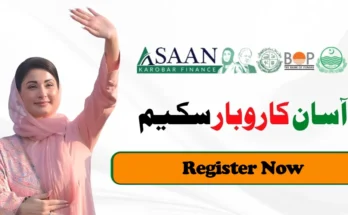Ehsaas Nashonuma Program 2025: In a nation where nearly 40% of children under five suffer from stunting, the Ehsaas Nashonuma Program stands as a beacon of hope for improving maternal and child health. As we step into 2025, this initiative—now widely known as the Benazir Nashonuma Program—continues to evolve, addressing malnutrition through targeted interventions.
Launched under the broader Ehsaas framework, the program focuses on the critical first 1,000 days of a child’s life, from conception to age two, to prevent long-term health issues and foster human capital development.
With recent extensions, new partnerships, and updated benefits, Ehsaas Nashonuma 2025 promises enhanced support for vulnerable families across Pakistan. This article explores the program’s objectives, eligibility, benefits, implementation, achievements, challenges, and future prospects, providing a comprehensive guide for those seeking information on this vital social protection scheme.
Understanding the Ehsaas Nashonuma Program
The Ehsaas Nashonuma Program was initiated in 2020 by the Government of Pakistan as part of the Ehsaas poverty alleviation umbrella, spearheaded by the Benazir Income Support Programme (BISP). It targets the alarming rates of malnutrition in the country, where Pakistan ranks second in the region for stunting (40.2%), underweight children (28.9%), and wasting (17.7%). The program emphasizes preventive measures during pregnancy and early childhood, recognizing that proper nutrition in these phases can significantly reduce developmental delays and boost economic productivity.
Renamed and integrated as the Benazir Nashonuma Program, it operates as a conditional cash transfer scheme, linking financial aid to health and nutrition compliance. By 2025, the program has expanded nationwide, operating in 158 districts with over 512 facilitation centers, including mobile units for remote areas. This growth reflects the government’s commitment to Sustainable Development Goals (SDGs), particularly those related to zero hunger and good health.
Key Objectives of Ehsaas Nashonuma 2025
The core mission of Ehsaas Nashonuma remains steadfast in 2025: to break the cycle of malnutrition. Specific objectives include:
- Preventing Stunting in Young Children: Aiming to reduce stunting in children under two by promoting optimal growth through nutrition and health services.
- Improving Maternal Health: Ensuring pregnant women gain adequate weight, reducing risks of low birth weight and complications.
- Combating Anaemia and Micronutrient Deficiencies: Through specialized nutritious food (SNF) and supplements to address widespread deficiencies.
- Raising Awareness: Educating families on maternal and child health, hygiene, and nutrition practices.
- Enhancing Service Uptake: Encouraging regular health check-ups, immunizations, and antenatal care to lower disease burden.
These goals align with global best practices, as highlighted by the Copenhagen Consensus, which identifies nutrition investments as highly cost-effective for human development. In 2025, the program emphasizes gender-sensitive incentives, offering higher stipends for girl children to promote equity.
Eligibility Criteria for Ehsaas Nashonuma 2025

To qualify for Ehsaas Nashonuma in 2025, applicants must be part of BISP beneficiary families, ensuring the aid reaches the most deserving. Key eligibility groups include:
- Pregnant women registered under BISP Kafalat.
- Lactating (breastfeeding) mothers.
- Mothers of children aged 0-23 months.
Updated criteria for 2025 have broadened inclusion, incorporating more low-income households affected by economic challenges. Families must provide documentation such as a NADRA-issued CNIC for the woman, the child’s B-Form (if born), and an immunization card. Eligibility is verified through the 8171 Ehsaas portal or at Nashonuma Centers, making the process accessible even in rural areas.
If you’re wondering, “Am I eligible for Ehsaas Nashonuma 2025?”—check your BISP status via SMS to 8171 or the official website. This streamlined approach reduces barriers, allowing quick enrollment for those in need.
Registration and Application Process
Registering for Ehsaas Nashonuma 2025 is straightforward and user-friendly. Here’s a step-by-step guide:
- Verify BISP Status: Send your CNIC number to 8171 to confirm if you’re a BISP Kafalat beneficiary.
- Visit a Nashonuma Center: Located at Tehsil or District Headquarter Hospitals, these centers handle enrollment. Bring required documents.
- Undergo Assessment: Health checks confirm pregnancy or child eligibility, and awareness sessions are provided.
- Receive Confirmation: Upon approval, beneficiaries get a Nashonuma card for cash disbursements and SNF collection.
In 2025, digital enhancements include mobile wallet payments and bank accounts for women, starting from August 14, 2025, to promote financial inclusion. This update minimizes cash-handling risks and empowers women economically.
Benefits and Components of the Program
Ehsaas Nashonuma 2025 offers a multifaceted package combining cash, nutrition, and health services:
- Cash Transfers: PKR 2,000 per quarter for pregnant/lactating women and boy children; PKR 2,500 for girl children. Additional PKR 500 travel allowance per visit encourages compliance.
- Specialized Nutritious Food (SNF): Micronutrient-rich supplements for mothers and children to combat deficiencies.
- Health Services: Free antenatal/postnatal care, immunizations, and counseling on breastfeeding and hygiene.
- Awareness Sessions: Educational modules on nutrition and child development.
These benefits are conditional—mothers must attend check-ups and consume SNF to continue receiving aid. Since inception, over Rs. 21 billion has been disbursed, benefiting millions.
Implementation and Expansion in 2025

By 2025, Ehsaas Nashonuma has scaled to 157 districts, with over 550 facilitation centers delivering services. The program’s extension to June 2026, backed by a US$194 million government contribution, marks it as WFP’s largest government-funded initiative globally, totaling US$453 million since 2020.
New in 2025: Enhanced focus on mobile units for flood-affected or remote areas, and integration with digital tools for monitoring. The program now includes specialized packages for micronutrient support, addressing post-flood malnutrition spikes.
Partnerships and Funding
Collaboration is key to Ehsaas Nashonuma’s success. Partners include the World Food Programme (WFP), WHO, UNICEF, and provincial health departments. A recent US$6.257 million WHO-BISP agreement targets treating over 75,000 severely malnourished children, emphasizing breastfeeding promotion and evidence-based interventions.
These partnerships enhance capacity, with WFP providing technical expertise and BISP handling distributions. International interest positions Pakistan as a model for nutrition programs.
Achievements and Impact
Since launch, Ehsaas Nashonuma has reached over 2.5 million women and children, with 389,000 graduates showing improved health. Impacts include up to 20% stunting reduction in targeted districts, lower low birth weights, and better maternal outcomes.
Studies, like the ongoing impact evaluation, confirm reductions in infant mortality and underweight births, contributing to national development. Beneficiaries report better access to nutritious diets, bridging affordability gaps.
Challenges and Threats in 2025
Despite successes, challenges persist. Fiscal constraints threaten the nutrition support component, potentially undoing gains amid economic pressures. Experts warn that discontinuing SNF could reverse stunting reductions, impacting millions.
Other issues include duplication with provincial programs and access in remote areas. However, BISP assures continuity efforts, with partners like UNICEF advocating sustained investment.
Future Outlook for Ehsaas Nashonuma
Looking ahead, Ehsaas Nashonuma 2025 aims for full nationwide coverage, integrating AI for beneficiary tracking and expanding to more vulnerable groups. With renewed commitments, the program could further lower Pakistan’s malnutrition rates, aligning with Vision 2025 goals.
Innovations like eco-friendly SNF packaging and community-led awareness could enhance sustainability. As global malnutrition rises, Pakistan’s model offers lessons for others.
Conclusion
The Ehsaas Nashonuma Program 2025 exemplifies Pakistan’s dedication to eradicating malnutrition, offering life-changing support to mothers and children. By combining cash transfers, nutrition, and health services, it not only addresses immediate needs but builds a healthier future generation. If eligible, register today via 8171 or a Nashonuma Center—your child’s well-being depends on it. For more details, visit the official BISP website or consult local health authorities. Together, we can end stunting in Pakistan.



